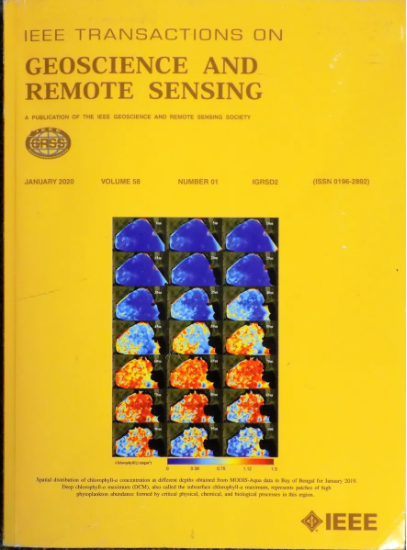基于无监督学习的单视点SAR图像三维目标重建
IF 8.6
1区 地球科学
Q1 ENGINEERING, ELECTRICAL & ELECTRONIC
IEEE Transactions on Geoscience and Remote Sensing
Pub Date : 2025-03-12
DOI:10.1109/TGRS.2025.3550633
引用次数: 0
摘要
长期以来,合成孔径雷达(SAR)图像的三维形状检索一直是一个重大的研究挑战,由于标记数据的稀缺性、样本多样性有限以及对雷达散射特性的高度敏感性等限制,单视图重建变得更加复杂。近年来发展起来的基于深度学习的方法在SAR图像的单视点目标重建方面取得了进展。然而,这些方法仍然严重依赖于三维地真监督,不能充分利用SAR成像机制进行三维重建。为了解决这些限制,提出了基于可微分SAR渲染器(DSR)的端到端无监督单视图三维重建框架,实现了精确重建,同时消除了对真实数据的需求。具体来说,编码器-解码器架构有效地提取了三维和角度特征,利用模板变形来保留跨尺度的精细细节和全局结构,以及用于三维形状重建的基本姿态信息。将重建的三维模型投影到二维平面上,采用像素级交联损失(PIoU)进行无监督学习,实现了判别潜在结构和模式的提取。该方法有效地降低了低频噪声,锐化了临界边缘,增强了高频细节,提高了空间结构精度,同时最大限度地减少了复杂目标的形状畸变和高度误差。在模拟和真实数据集上进行的大量定量和定性实验表明,该框架在单视点SAR三维目标重建中具有优越的性能,提供了一种具有广泛应用潜力的解决方案。本文章由计算机程序翻译,如有差异,请以英文原文为准。
Unsupervised Learning-Based 3-D Target Reconstruction From Single-View SAR Image
Three-dimensional shape retrieval from synthetic aperture radar (SAR) images has long presented a significant research challenge, with single-view reconstruction proving even more complex due to constraints such as the scarcity of labeled data, limited sample diversity, and heightened sensitivity to radar scattering characteristics. Recently developed deep learning-based methods have made progress in single-view target reconstruction from SAR images. However, these methods still rely heavily on 3-D ground-truth supervision and fail to fully leverage SAR imaging mechanisms for 3-D reconstruction. To address these limitations, an end-to-end unsupervised single-view 3-D reconstruction framework based on a differentiable SAR renderer (DSR) is proposed, achieving precise reconstruction while eliminating the need for ground-truth data. Specifically, the encoder-decoder architecture effectively extracts 3-D and angular features, utilizing template deformation to preserve both fine details and global structures across scales, along with essential pose information for 3-D shape reconstruction. The reconstructed 3-D model is projected onto a 2-D plane, and pixel-level intersection over union (PIoU) loss is employed for unsupervised learning, enabling the extraction of discriminative latent structures and patterns. This approach effectively reduces low-frequency noise, sharpens critical edges, and enhances high-frequency details, improving spatial structure accuracy while minimizing shape distortions and height errors in complex targets. Extensive quantitative and qualitative experiments on both simulated and real datasets demonstrate the framework’s superior performance in single-view SAR 3-D target reconstruction, offering a promising solution with broad potential applications.
求助全文
通过发布文献求助,成功后即可免费获取论文全文。
去求助
来源期刊

IEEE Transactions on Geoscience and Remote Sensing
工程技术-地球化学与地球物理
CiteScore
11.50
自引率
28.00%
发文量
1912
审稿时长
4.0 months
期刊介绍:
IEEE Transactions on Geoscience and Remote Sensing (TGRS) is a monthly publication that focuses on the theory, concepts, and techniques of science and engineering as applied to sensing the land, oceans, atmosphere, and space; and the processing, interpretation, and dissemination of this information.
 求助内容:
求助内容: 应助结果提醒方式:
应助结果提醒方式:


